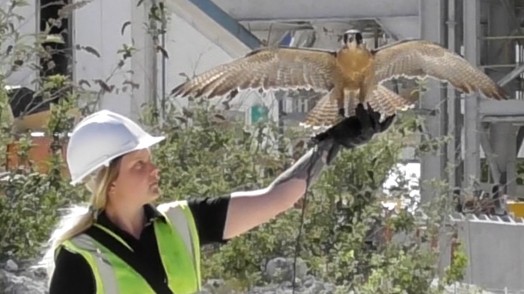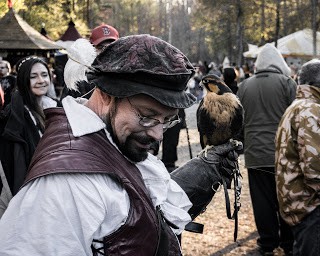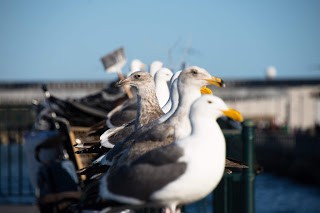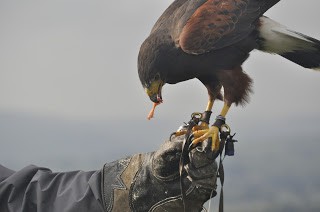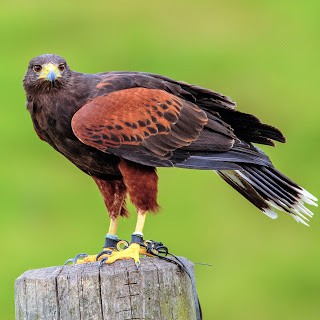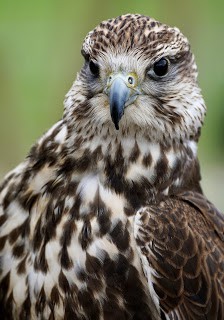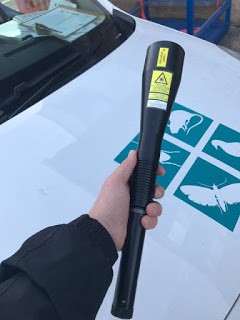Signs that your falconry service isn't fit for purpose
Monday 21st May 2018
Yes, that’s right. Falconry for pest bird control. If this in itself is surprising, don’t start here! Please have a look at our bird control services.
There are lots of have-a-go heroes out there.
Not all falconry services are alike. Just like any other service provider, there is a grade of professional.
There are lots of falconry companies out there who are just ‘having a go’ because falconry has been their hobby and they’ve realised that they can make money from it.
There are lots of companies out there who are or were just pest controllers, and they have bought a bird (a Harris hawk, let’s be honest) so that another contractor can’t muscle in on their work.
There are lots of falconry companies who undervalue their work, overpromise and overstate the effectiveness of visiting a site every once in a while.
Then there are companies like ours; who have a dedicated falconry team. We have a cycle of birds, so they are rested at given times of years and return to condition.
- we have different species of bird for different target pests and different topographies,
- we are dedicated to continued professional development and regularly exchange knowledge with other professionals around the world,
- We actually have bird control/Falconry specific qualifications! (rather important, don’t you think?)
It’s a bit different from ‘having a go.’
I’m almost off my soapbox, bear with me.
Many protentional companies have been put off using Falconry, down to poor service and results from so-called professionals. Companies main complaints about other falconry/pest control companies are birds going missing, birds ripping pigeons to shreds in front of school children (really), birds just lazing about somewhere and not coming down, even birds preferring to have a bath in puddles than go after the target species!
Honestly, sending your bird to have a bath while confused, and possibly aroused, seagulls watch it… is not what we call falconry.
It’s not about killing.
There is always a lot of confusion around falconry for bird control. Lots of customers and falconry companies think that killing pigeons with a falcon is the point of the whole exercise. That would be silly. If that were the point, we could have any old farm boy turn up with a pop-gun and do the same job (ask our competitors, who charge very handsomely for such a service thank you very much).
The point of falconry for bird control is to harness the instinct of the pest birds. To visually repel them. You control the environment BEFORE you control the pest.
If you can create an environment that feels so hostile pest birds won’t want to hang around, to be killed, have their children, or feed, they will actively avoid the site like the rough part of town where they don’t go. Flight lines will change to avoid the area.
It’s all about training the birds the right way.
You see, the birds of prey have to be trained correctly, just the same as any service professional. Raptors are naturally inclined to kill. They have a very short brain stem that means that there is no thinking time between their instinctive reaction to launch themselves at tasty prey and actually doing it.
So, if its instincts of the raptor you need to curb, you have to train your birds nearly FROM BIRTH. They have to be taught to associate their handler with food, not pest birds.
Most birds of prey are instinctive killers; it is in the training while still very young a pest control bird learns not to instinctively kill. This is why hobbyists who decide to be professional pest bird controllers are really approaching this from the wrong angle and will likely be selling you the wrong service without really knowing it.
Why use a pest bird control trained bird and not use a hunting bird of prey?
One word- Control.
Bird of prey trained to control will focus on the handler and keep to the site being worked. It will work in the areas that have issues without flying off. A hunting bird will not see its handler as a provider if it cannot kill, in most cases, they will go off and hunt elsewhere and ignore the handler.
A bird of prey killing an animal is never going to end well regardless of where, at best the kill could be out of sight from the public and staff, avoiding bad PR of a bird ripping another animal apart, but this still normally means the end of the working day as it is likely to be in an awkward place to retrieve. If able to gorge its self before the prey is removed from it, they will not fly and become unresponsive.
Why use different birds for different jobs?
“Put a glove on a yucca plant, and you can fly a Harris Hawk.”
That’s great for pigeons in most cases but try your Harris Hawk vs seagulls or geese, and you may well have a beaten-up bird on your hands. Worst case scenario, a dead one.
Birds such as seagulls need an agile, high flying, and fast diving bird like a gyr or peregrine falcon everything a Harris hawk is not.
So really no killing?
Don’t get me wrong, if the pest birds are stubbornly sticking around a site, then either a hunting bird or a rifle can be used. Luckily, it doesn’t take much to reinforce the lethal threat to the rest of the flock. But it needs to be the last resort.
This isn’t just my opinion; it is the law! Probably one of the most abused pest control laws there is- https://assets.publishing.service.gov.uk/government/uploads/system/uploads/attachment_data/file/669161/gl05-birds-phs-licence.PDF
Constant pressure
A lot of companies out there will offer a monthly falconry visit to a site.
I honestly cannot think why. I struggle to remember what I was up to last month; do you really think a bird will remember? We see this all the time. I can only think that pest control companies have come up with this model in response to objections over price. If you are receiving this sort of service you are wasting your money, watch your falconer closely. The birds will disperse when the birds of prey come out; Then, once he/she is off-site, they will be back within the hour. No sweat.
This isn’t vaguely hostile, just a day-to-day inconvenience for the pest birds. I don’t call that control.
Most of the time this sort of service is backed up by a quarterly shoot, where the pest controllers turn up mob-handed and reduce numbers by killing. This is where they really get their results, and it makes me wonder what the point of having a bird of prey there is at all? It seems less about deterrence and more about elaborate marketing to craft a perceived point of difference that is nothing more than showy prestidigitation. I’m back on my soapbox, how did I get up here again?
Integrated techniques
Regular readers of this blog will get bored of me talking about creating a hostile environment. Some sites may need an integrated service depending on the pressures of the site, but the hierarchy still stands.
- Handheld Laser deterrent used in conjunction with falconry
- Proofing
- Trapping
- Shooting
See how Trapping and shooting come last? Just saying.
Constant pressure is the only answer to really embed the idea in the pest birds’ little minds: This Site=Danger.
Anyway if you’ve got this far, we really should talk. Don’t settle for bad falconry, don’t be fooled by hobbyists, contact us and get a first-class service:

